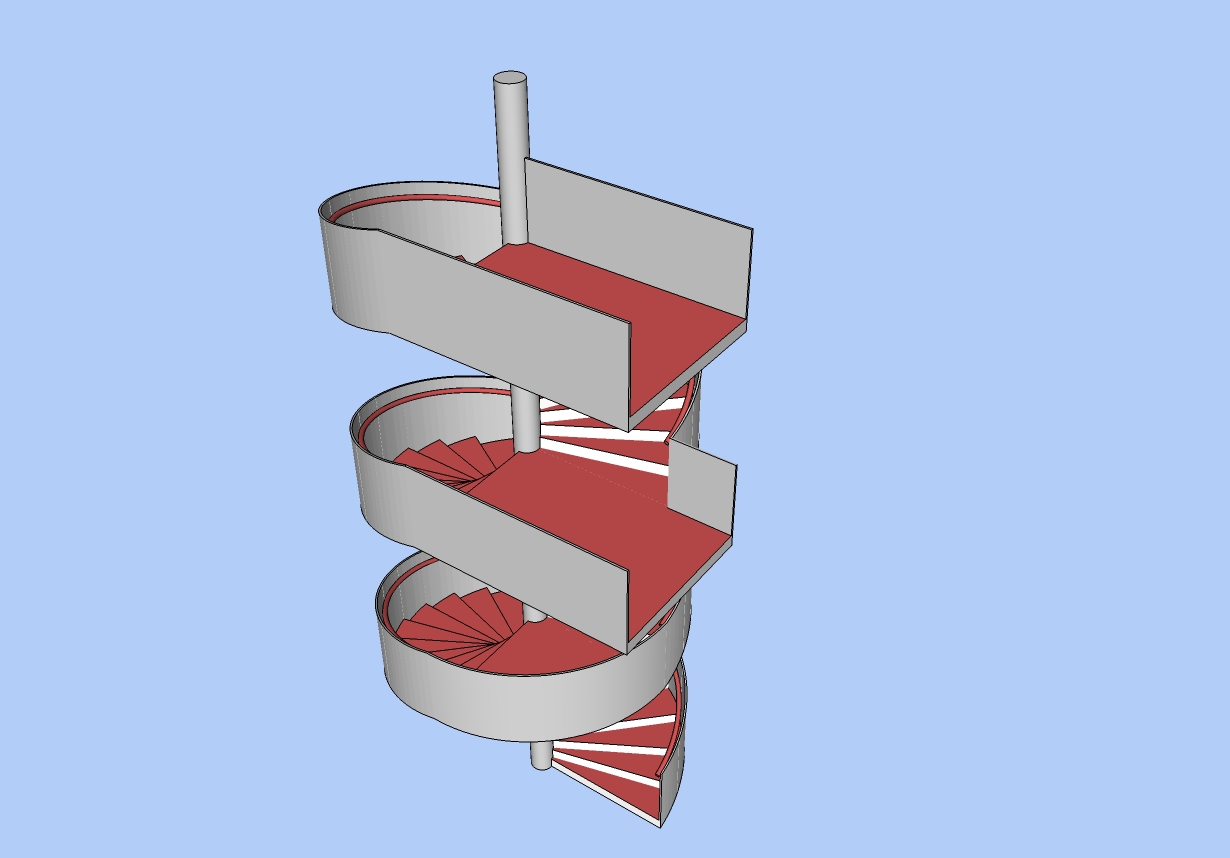Metal Spiral Stairs - how to do it?
-
@edson said:
beautiful, TIG. it shows once more the power of sketchup. but nonetheless i will tell as a friend: plugins can make your life much easier! there are some people in this forum who make wonderful plugins...

Maybe I should try some ....

-
FollowMeand keep with Grow could be the ideal solution.
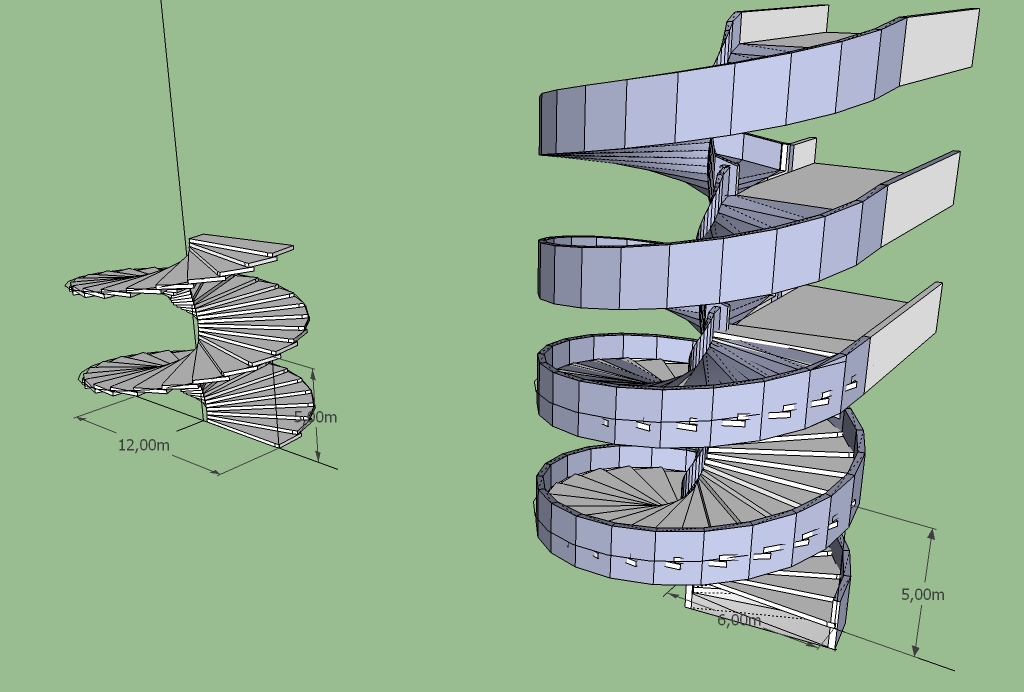
-
I deliberately avoided mentioning my Grow tool as I was trying to show it all 'long-hand'...

-
Hi TIG,
shure you can help me to solve a small problem with Grow. How can i manage that the Center of the Grow object meets a individual axe.
Thanks in advance
Karlheinz
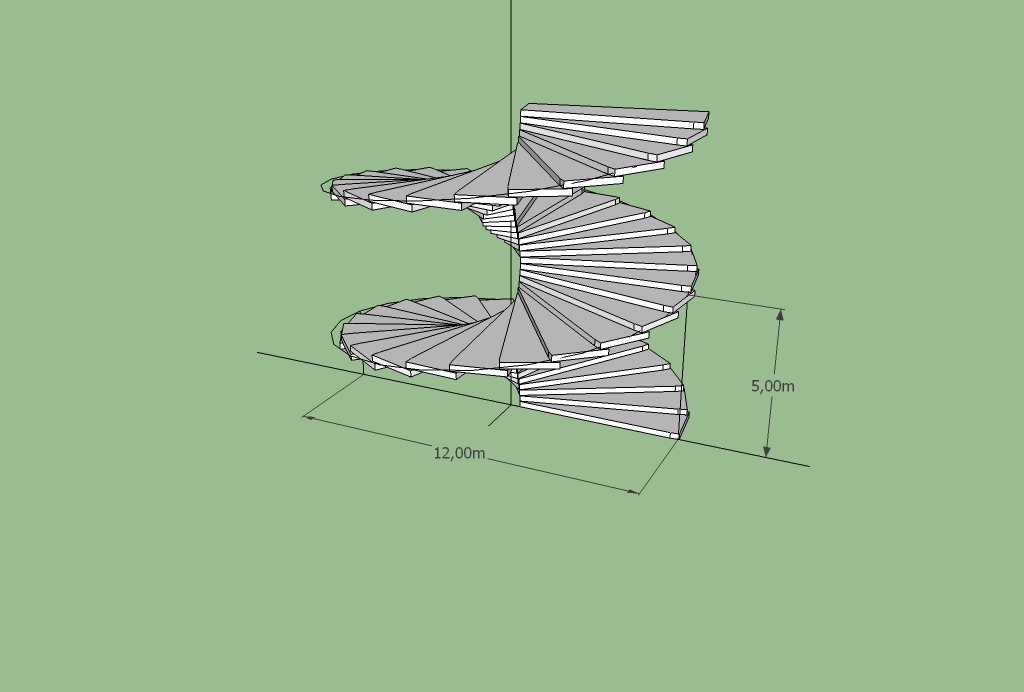

-
Manipulate the component's axis and its location relative to the 'growth' point....
-
The final result with FollowMeandKeep and Grow.
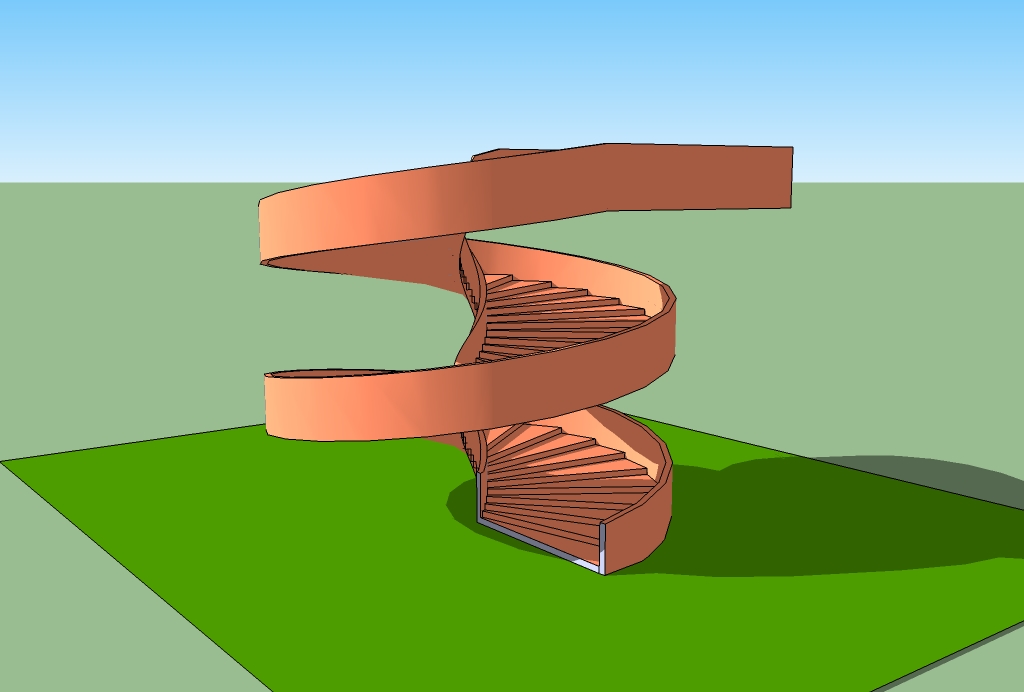
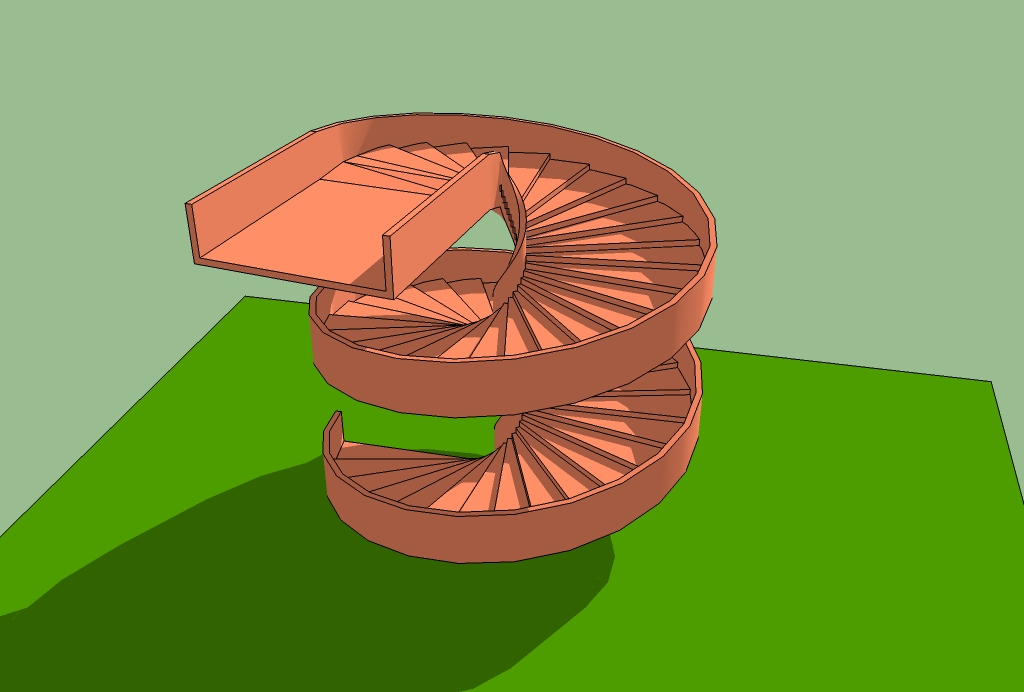
-
You guys are great, hope I can find this post if I ever do a spiral stairs in SU.
-
No offense to all you spiral stair makers but the wide stairs that you show with winders coming to a narrow point would be very dangerous (especially in descent). I would suggest a bigger inside hole or solid radius to assure a minimum tread depth. That's why typical library or residential stairs are quite narrow in width so as to keep a person in the middle of the tread with proper depth for the foot. Such wide stairs with point winders would be prohibited by code in the US, even for non-egress stairs in commercial stuctures.
-
But if you put a traffic dividing handrail right down the middle, then make the inside lane flat and smooth, you could have a really nice safe up half with wide treads, and a nice spiral slide down lane.

-
do you know this mythical thread?

-
Inspired by TIG, and all done without plugins. A handrail would be fairly easy to include in the model.
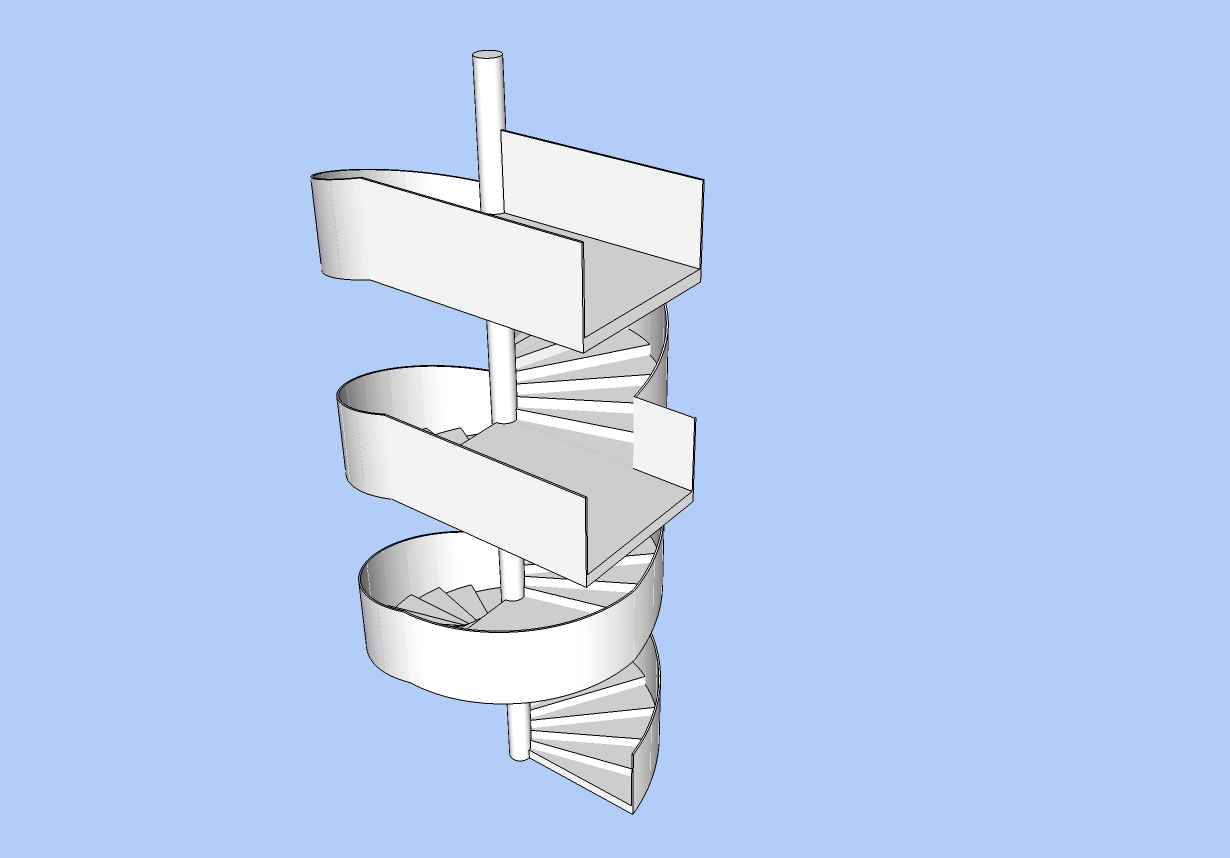
-
@unknownuser said:
do you know this mythical thread?

Well there will be a lot of down time at workplaces around the world now Pilou....
It ia a mythical thread, I think it gave mimi the title "stairmaster" because of the number of great posts she made. -
Hi Spiral stair Fans,
Here a few further examples. The construction is best started at the point of origin. Then one has the exact center of the construction.
I have also tried to cover the bottom of the stairs with Follow Me and Keep but this was not successful. Only the first stair was covered.
For the hand rail i tried the Balustrade Rubies but both doesn't work in my Sketchup 7.

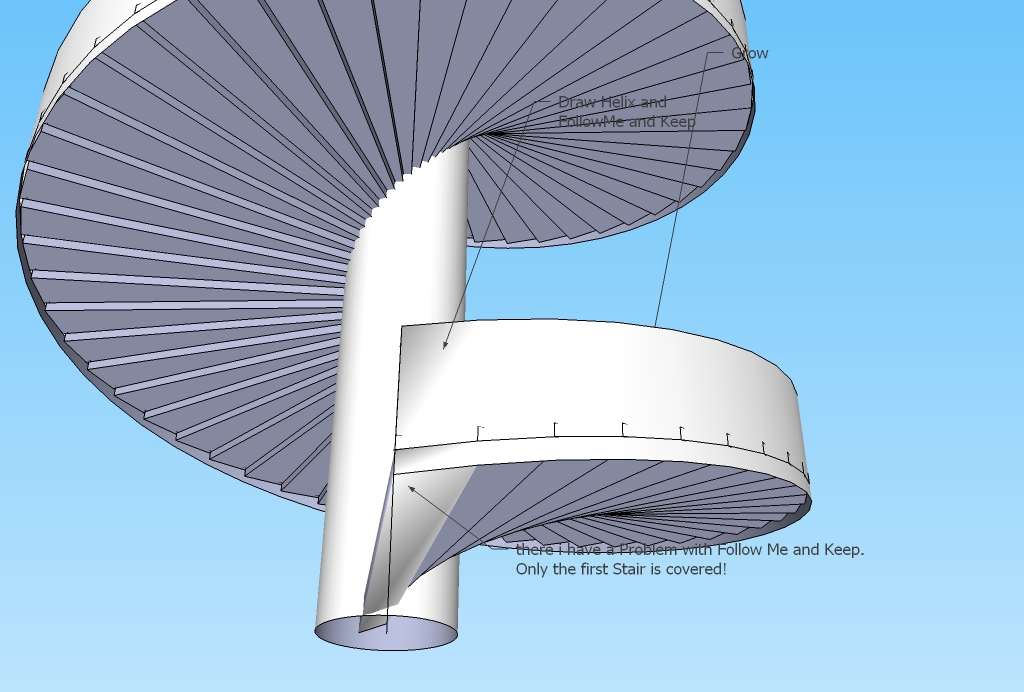
-
-
@honoluludesktop said:
You guys are great, hope I can find this post if I ever do a spiral stairs in SU.
how about bookmarking it?

-
@pmiller said:
No offense to all you spiral stair makers but the wide stairs that you show with winders coming to a narrow point would be very dangerous (especially in descent). I would suggest a bigger inside hole or solid radius to assure a minimum tread depth. That's why typical library or residential stairs are quite narrow in width so as to keep a person in the middle of the tread with proper depth for the foot. Such wide stairs with point winders would be prohibited by code in the US, even for non-egress stairs in commercial stuctures.
no offense taken, paul. if you look at the last one i posted it has an inside radius of 50cm which makes for at least 15cm (6") at ther narrowest point. in my opinion, for a spiral stair to be confortable it must be quite wide as the one in the picture shown at my first post.
-
To repeat an earlier thread...
When making spiral steps there are often rules/codes to adhere to..
In the UK on narrower flights <1m [typically domestic or small commercial flights] you must have at least 50mm of plan-tread at the innermost part and the plan-tread on the centerline should be even for every step, and follow the rule 2R+G >=550mm <=700mm - where R is the Rise and G is the Going [plan-tread].
If you draw this in plan it limits the relative angle of adjacent nosings and effectively sets a limit on the taper angle between them = ~15degrees depending on the configuration etc...
For wider stairs you measure in from both edges [strings] 270mm and the same max/min pitch applies, 2R+G >=550mm <=700mm to the two locations
Any landings shall be the same length as their width measured along their centerline.
The minimum/maximum allowable Rise and Going varies with the building type too.
'Private Stair'[one dwelling] R >=155mm <=220mm and G >=223mm <=300mm [vertical pitch is also limited to 42 degrees - usually trapped by 2R+G rules]
'Institutional and Assembly Stair' R >=135mm <=180mm and G >=280mm <=340mm
'Other Stair' R >=150mm <=190mm and G >=250mm <=320mm
BUT AD-Part-M [accessible/disabled=all commercial/public building etc] R <= 170mm G >= 250mm
So it's best to draw some test treads and place rotate a couple to see it they are right before committing to a complex 3D assembly...

-
@unknownuser said:
do you know this mythical thread?

i wish i had access to it. according to ppb i do not have permission to access that page. i wonder how they expect me to participate more if i am not allowed to access certain threads.
-
randomly thought of this earlier today.. i drew it pretty darn fast though it could use a little fine tuning.
shape bender by chris fullmer..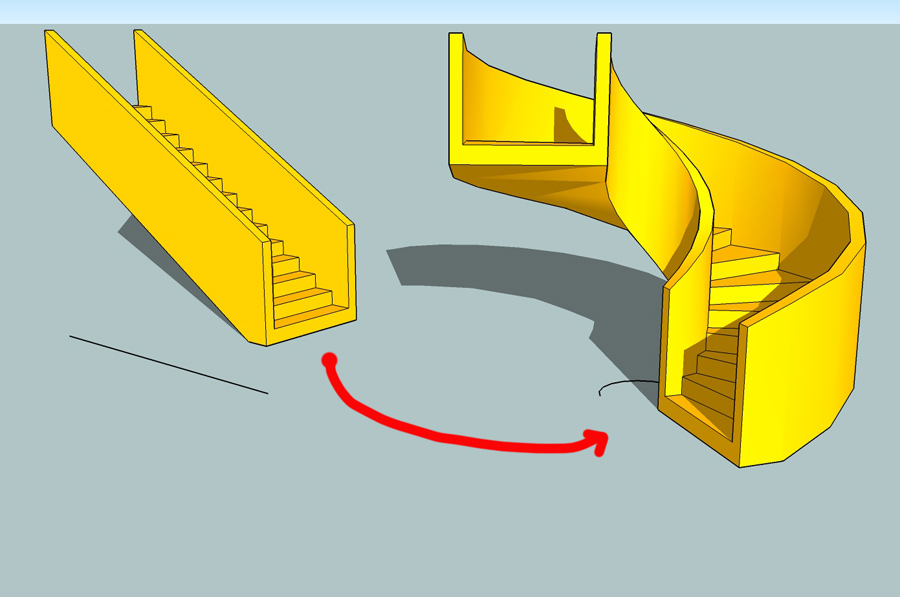
-
gotta admit.. this is one area where bonzai3D is far superior to sketchup.. parametric stair building!
[flash=660,405:2pgaictc]http://www.youtube.com/v/_zgK8YYYoLo&hl=en_US&fs=1&rel=0&border=1[/flash:2pgaictc]
Advertisement
